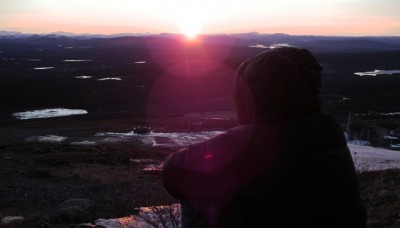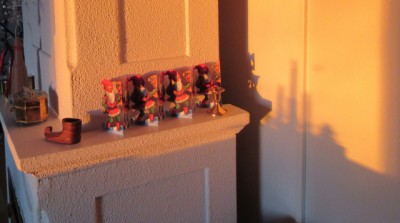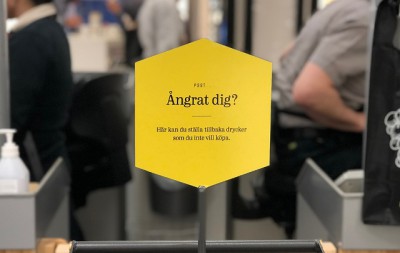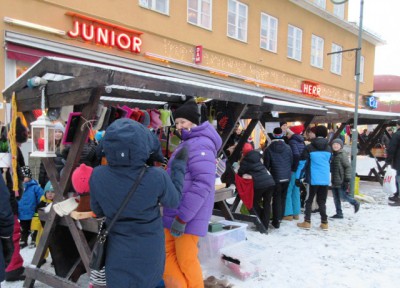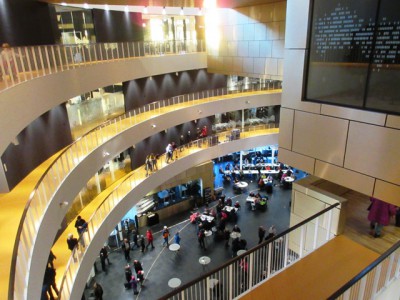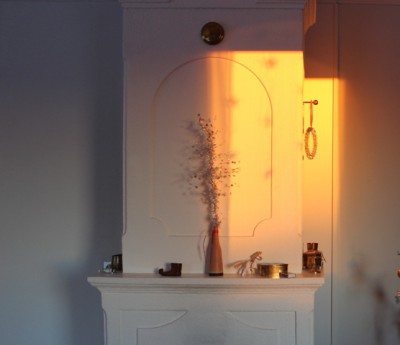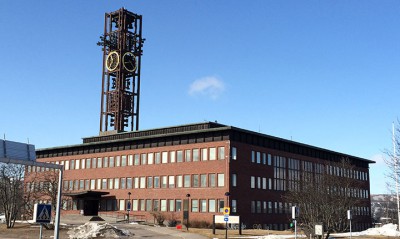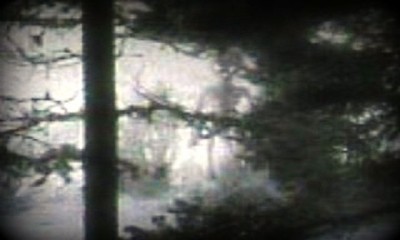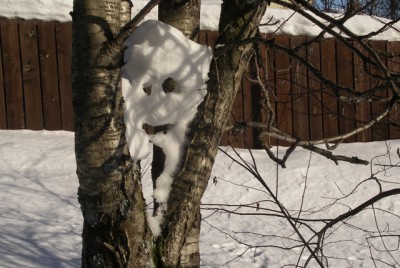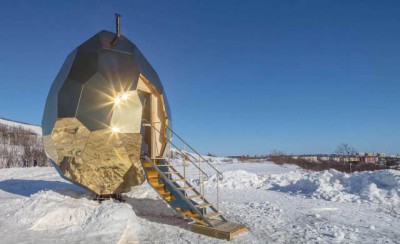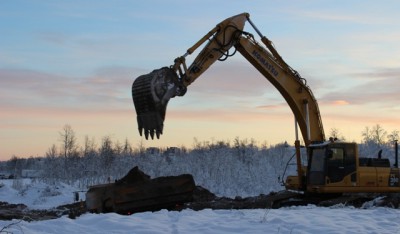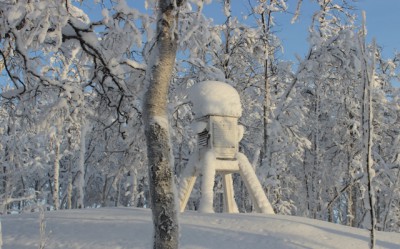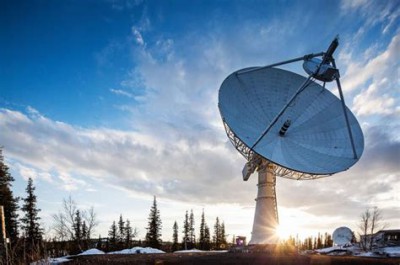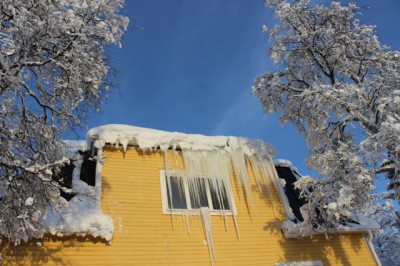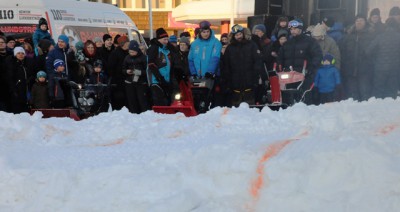I wouldn’t call Kiruna people cynical exactly, but there is a touch of world-weary acceptance in their approach to life. They’re so calm about losing their town to mine subsidence – why aren’t they protesting? The reason is, it’s nothing new; parts of Kiruna have collapsed before. Some people were brought up in an area that no longer exists – wiped out of existence, not a trace left of those houses, streets, shops. The current having-to-move-the-town commotion is nothing new for Kiruna, it’s business as usual.
So it is with most things, we find, the longer we live here. We’ve had a tendency to get a bit hot under the collar about some developments in town, and been disappointed in the lack of reaction or protest from local people. Why don’t they care?
As a case study, lets take one of our favourite places, the hill or mountain of Luossavaara in town. It used to be mine, but for a very long time now it’s been the town’s downhill skiing slope. In the summer it’s a brilliant place to climb at night – you can see the midnight sun from there for weeks, and the view out to the fjäll is magnificent.
During some part of the year you can drive some of the way up, but other times – when snow isn’t cleared – you have to walk. It’s challenging to get there, but there’s plenty of reward at the top.
Then ten years ago, when the local politicians started having visions about the Kiruna of the future – the town to be that the mine would pay for when they took away our old one – the visions that have turned out to be dreams with no link to reality – during that time, someone had a ‘clever’ idea. We need more hotels, they thought, and there’s a nice view from the top of that mountain – why don’t we build a hotel there? Then they had an even ‘cleverer’ idea – what’s great about there is the midnight sun, so this hotel will be just great for people who want to come to Kiruna to see it.
Our first reaction was, who wants a hotel where the sun will shine straight through your bedroom window all night and keep you awake?
But that aside, what really concerned us was, if they build a hotel there then it will be out of bounds for non-paying guests, covered in concrete and car parks, and no longer a wonderful viewing place for locals. We thought it was a terrible idea, destroying one of Kiruna’s great attractions. While the council were trying to encourage tourism, they were also planning to kill the goose that was laying the golden eggs.
We didn’t hear anyone protesting. The politicians thought it was a wonderful idea, and local people were, as usual, silent. What about the destruction of their viewing place, didn’t they care? Did they like the idea or hate it? Hard to say.
The company that had come up with this idea in the first place quickly got the go-ahead and work began. We read they didn’t yet have all the finance in place, but they had enough to start the work, and there were already reports in the local press of how wonderful it would be when it was finished. Tons of concrete were dragged up Luossavaara. Lorries and machines working all spring and early summer. The foundations were laid, and the shell of the hotel went up. The rest of the concrete blocks for building the hotel were stored on the road leading there, piled up next to the walking and skiing paths.
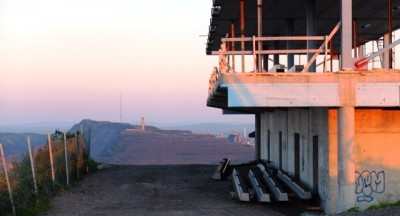
That summer things slowed down. Workers, we assumed, were on holiday. From all over town we saw the concrete shell, an eyesore in a prime beauty spot. It looked sad.
Then there was the Kiruna Festival, and the town filled up with party goers. Locals and visitors alike flocked to the town square and to any viewing point around – which traditionally had always included the top of Luossavaara. We were there too.
There was a glorious moment of mass trespass that day, when, frustrated by the lack of space and looking at the flimsy barriers around the concrete shell, the amiable crowd flooded into the concrete shell and reclaimed the view.
Summer passed, but still no sign of work on the hotel. We guessed that the company building it had failed to raise the money necessary to continue. Local papers discussed the problem, and suggested ways for them to raise the money. And still no-one complained.
Rumours began to spread, and some of these were later confirmed. It wasn’t just a problem of finance. It turned out that the land on Luossavaara is owned by the State, and the company didn’t have permission to build there at all. The council had turned a blind eye to this, but the State wouldn’t.
A whole year, and then another, passed, and during this time the huge piles of concrete material left lying around by the builders began to rot by the road.
At one point, during the years after this when nothing happened, the local council asked us not to litter on Luossavaara. Not to litter?! When there were all those blocks of rotting concrete blocking the views?! You’d have thought that the company responsible would have been required to remove its debris. But still no-one complained.
Well actually, we did – and the council replied that the concrete blocks would be removed, sometime…
The light at the end of the tunnel was when, inexplicably (at the time) the local mining company, LKAB, agreed to take responsibility for the shell and come up with a plan for it. We knew then that the concrete debris would finally be removed, and it was.
Fast forward another two years. The concrete shell is still there, the debris has gone. LKAB has moved some of Kiruna’s old buildings to the land at the foot of Luossavaara and is planning on building flats there. The local council are still talking about the new Kiruna on the other side of town, but all eyes are turned in another direction, here to Luossavaara.
They can’t talk about the new Kiruna, which still isn’t built, but as elections approach local politicians have arranged for a new ski-lift to be installed on Luossavaara. A strange priority, you might think, especially with its capacity of moving 2400 people an hour, which is probably more than we get in a week visiting Kiruna. But they’re looking to the future, they say, and they’re also thinking of plans for the top of Luossavaara….
They aren’t sure what LKAB have in mind, but they’re thinking of developing the area as a viewing spot.
